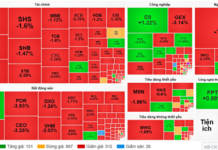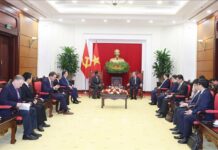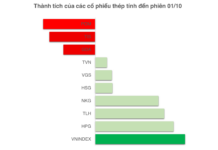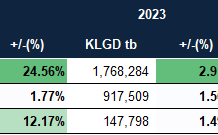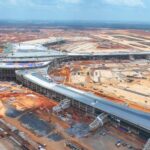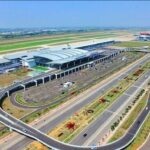The Ho Chi Minh City Department of Industry and Trade has issued a document on the implementation progress of free trade zone research projects in the area.
Following the expansion of its administrative boundaries, Ho Chi Minh City is planned to have four free trade zones: Can Gio (with a scale of 1,000-2,000 hectares), Cai Mep Ha associated with the seaport (belonging to the former Vung Tau province), Binh An, and Bau Bang.
Regarding the Cai Mep Ha free trade zone associated with the seaport (now belonging to Tan Phuoc and Tan Hai wards), the project covers an area of 3,764 hectares and is divided into three functional areas and eight sub-areas. On May 21, the People’s Committee of the former Ba Ria-Vung Tau province submitted the research proposal to the Government for appraisal and approval. So far, the Ministry of Industry and Trade has provided feedback.
The Can Gio free trade zone was approved in the Ho Chi Minh City master plan for the period of 2021-2030, with a vision towards 2050, and in the adjusted city planning scheme until 2040, with a vision towards 2060. The project has a scale of about 1,000-2,000 hectares, associated with the Can Gio international transhipment port and Ganh Rai Bay. The Department of Industry and Trade is currently advising the Ho Chi Minh City People’s Committee on the reorganization of the research team for this project.
The An Binh free trade zone is planned to be located at An Binh railway station (in the former Di An City), on the Ho Chi Minh City-Loc Ninh railway line, from the An Binh main station to Bau Bang station, with a length of 53.63 km. This line connects Bau Bang station through the cargo centers of the former Binh Duong province to the Cai Mep- Thi Vai deep-water port and to Moc Bai border gate in Tay Ninh province.
The Bau Bang free trade zone has been included in the Binh Duong province master plan for the period of 2021-2030, with a vision towards 2050. It is located on the Ho Chi Minh City-Loc Ninh railway line. However, this project is entirely dependent on the progress of the aforementioned railway construction, while the infrastructure is still in the research phase and has not yet been formed. Therefore, the Ho Chi Minh City Department of Industry and Trade proposed postponing the implementation to the 2035-2040 period to align with the completion schedule of the railway.
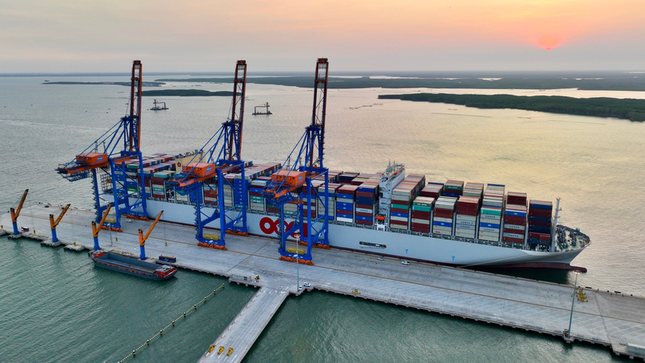
The Cai Mep Ha free trade zone associated with the seaport has a scale of 3,764 hectares, divided into three functional areas and eight sub-areas.
According to the Ho Chi Minh City People’s Committee, the implementation of the city’s free trade zone projects has attracted the attention and support of domestic and foreign investors. So far, several large investors such as DP World, Vingroup, and the Geleximco joint venture have expressed their interest in participating.
However, relevant legal regulations are not yet complete, and there is a lack of specific policies. The formulation of these policies is hindered by inconsistencies or lack of provisions in the current law.
Additionally, following the merger of provinces, Ho Chi Minh City’s economic scale and administrative boundaries have changed. Therefore, it is necessary to reassess the logistics sector and regional supply chain linkages, leveraging the strengths of the three regions: Binh Duong (industry), Ba Ria-Vung Tau (marine economy and logistics), and Ho Chi Minh City (international finance).
Regarding the An Binh and Bau Bang free trade zones, the Ho Chi Minh City People’s Committee believes that they cannot be implemented in this phase. In April 2025, the People’s Committee of the former Binh Duong province assigned the Becamex IDC Corporation to research and survey the project of a free trade and economic zone in Tan Uyen ward, with a scale of 50 hectares. However, this location is not within the planned Ho Chi Minh City free trade zones.
The Ho Chi Minh City Department of Industry and Trade proposed that the Government consider and approve the free trade zone projects and develop strategies for their development. Simultaneously, they recommended that the Government direct ministries and sectors to coordinate with the Ho Chi Minh City People’s Committee to formulate flexible and diverse incentive policies to attract investment and facilitate production and business activities.
Furthermore, the Department proposed that the Ho Chi Minh City National Assembly Delegation consider including policies on the establishment of free trade zones in the amended Resolution 98.
Redirecting International Flights to Long Thanh Airport: An Airline’s Intriguing Proposal
“There are compelling reasons to retain international flights to Southeast Asian destinations at Tan Son Nhat Airport. These routes cater to a unique demographic: business travelers and short-haul holidaymakers. The proximity of these destinations and the nature of the traveler’s itineraries warrant the retention of these flight paths.”
The Master of Rapid Transit: Unveiling Ho Chi Minh City’s $4 Billion Metro Project with MAUR at the Helm
The Ho Chi Minh City Management Authority for Urban Railways has been appointed as the investor for the development of two metro lines, previously connecting Binh Duong, with a total investment of nearly VND 100,000 billion.
The Smart City Development: A Visionary Proposal for Chu Lai
“Secretary of the Danang City Party Committee, Nguyen Van Quang, emphasized the importance of developing a vibrant ecosystem within the Chu Lai Open Economic Zone and industrial parks. He envisioned the creation of a liveable environment with essential services, housing, and entertainment options. Mr. Quang proposed the development of “Truong Hai City” or “Thaco City,” potentially even a smart city, to transform the area into a thriving and attractive destination.”
“Streamlining the Management of the Entire Vanh Dai 3 Route”
The Ministry of Construction has proposed that Ho Chi Minh City take charge of the entire Ring Road 3, including the section passing through Dong Nai province, to ensure unified operation and toll collection.


